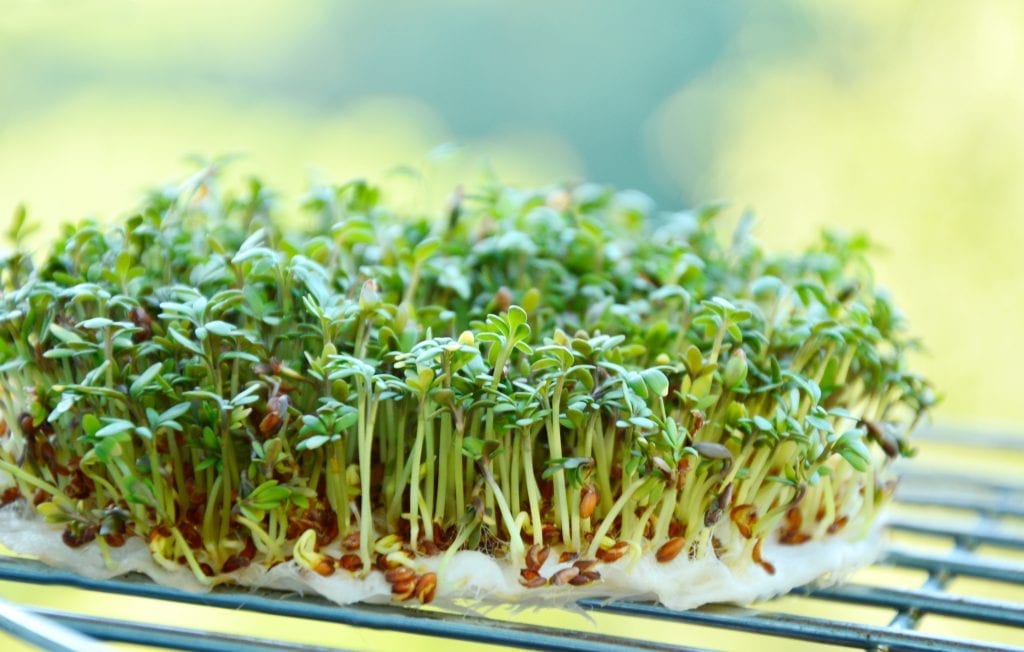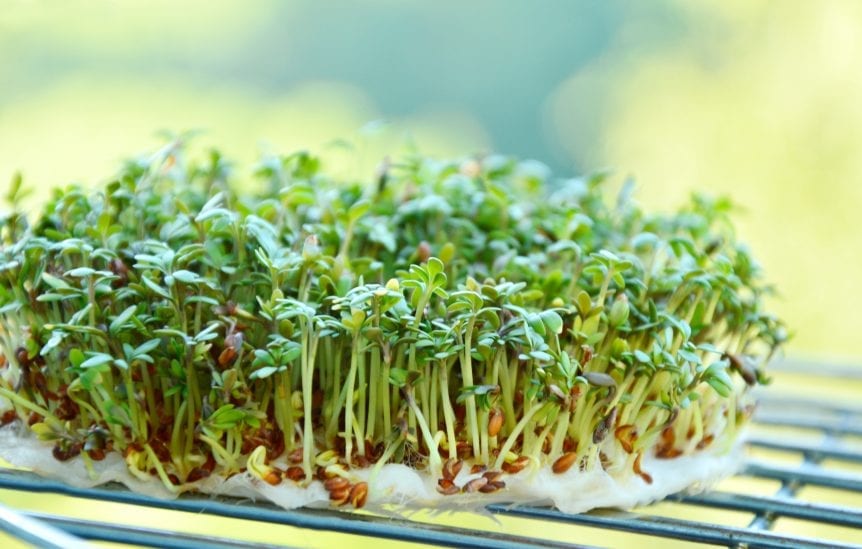
Cathy Isom has a few tips for you about how to grow one of easiest greens that’s also known as a nutrient powerhouse. That’s coming up on This Land of Ours.
Cress is a green that is a known nutrient powerhouse, packed with vitamins and minerals, calcium and iron. It’s also full of antioxidants and thought to have medicinal properties because its high in iodine.

Cress is often grown as a micro-green and used in salads. It’s slightly similar to arugula but with a crisper, crunchier texture. Once cress starts to produce little tiny white flowers, the plant becomes bitter and unpalatable. It grows really quickly, though, so it’s key to harvest before then.
There are a few varieties of cress and each have a slightly different flavor profile. Cress is the baseline version of cress, which features flat, non-curled foliage. Curled cress, also known as wrinkled cress. The leaves have a frilly appearance, and the cress has a bit more texture than the other varieties and is a biennial. Watercress is a tasty, crunchy green, and it’s also a perennial variety. It prefers damp soil.

Cress grows well in zones 6-9, prefers full sun unless if you live in a hot climate, in which case, plant in partial shade so the plant has some protection during the heat of the day. Cress is the perfect green to grow in containers and doesn’t require loads of space. It’s also ideal for indoor growing since it’s harvested early and doesn’t require a lot of maintenance. If you have little space outside and prefer to grow indoors, cress is a perfect candidate for your narrow windowsill.
I’m Cathy Isom…










